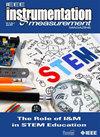Research on Single-Frequency PPP-B2b Time Transfer
IF 1.6
4区 工程技术
Q3 ENGINEERING, ELECTRICAL & ELECTRONIC
引用次数: 0
Abstract
Time transfer based on global navigation satellite system (GNSS) using precise point positioning (PPP) is a critical technique in universal time coordinated (UTC) calculation. PPP relies on precise satellite orbit and satellite clock offset products obtained through network solutions. Since August 2020, the Beidou global navigation satellite system (BDS-3) has provided GNSS users with the PPP product using PPP-B2b signal through three geostationary earth orbit (GEO) satellites instead of a network in the Asia-Pacific area. Network interruption will cause PPP reconvergence and terminate the time transfer, which hinders the application of PPP time transfer. The real-time PPP-B2b product broadcast by GEO satellites can be considered to solve the problem of interruption caused by network fluctuation in the field of real-time PPP. To promote the application of real-time PPP time comparison in UTC calculation and develop PPP-B2b application in time transfer, single-frequency (SF) PPP-B2b time transfer is investigated. Meanwhile, the treatment of ionospheric delay of SF PPP-B2b is crucial, and a GRAPHIC SF PPP-B2b model is proposed and validated in order to keep PPP-B2b network-independent. Data from two international atomic time (TAI) time-keeping laboratories and two international GNSS service (IGS) stations were used to analyze the accuracy in SF time comparison applications using the PPP-B2b product from common clock difference (CCD) and long-baseline time links. Results show that the SF PPP-B2b CCD sequences can be concentrated within 0.2 ns. The long-baseline time difference between SF time transfer using PPP-B2b product and dual-frequency (DF) time transfer using the final product fluctuated within 2 ns. In addition, the standard deviation (STD) values of PPP-B2b time comparison are mainly distributed at 0.5 ns. Meanwhile, only BDS and $\text{BDS}+\text{GPS}$ can achieve similar SF PPP-B2b time transfer accuracy.单频PPP-B2b时间传递研究
基于全球导航卫星系统(GNSS)的精确点定位(PPP)时间传递是世界时间协调(UTC)计算中的一项关键技术。PPP依赖于通过网络解决方案获得的精确卫星轨道和卫星时钟偏移产品。自2020年8月以来,北斗全球导航卫星系统(BDS-3)通过三颗地球静止轨道卫星(GEO)而不是亚太地区的网络,向全球导航卫星网用户提供了使用PPP-B2b信号的PPP产品。网络中断会导致PPP重新聚合并终止时间转移,从而阻碍PPP时间转移的应用。GEO卫星实时广播的PPP-B2b产品可以考虑解决实时PPP领域因网络波动而造成的中断问题。为了促进实时PPP时间比较在UTC计算中的应用,并发展PPP-B2b在时间传递中的应用。同时,SF PPP-B2b电离层延迟的处理至关重要,为了保持PPP-B2b网络的独立性,提出并验证了GRAPHIC SF PPP-B2b模型。使用来自两个国际原子时(TAI)计时实验室和两个国际全球导航卫星系统服务(IGS)站的数据,使用来自通用时钟差(CCD)和长基线时间链路的PPP-B2b产品,分析SF时间比较应用的准确性。结果表明,SF-PPP-B2b CCD序列可以在0.2ns内集中。使用PPP-B2b产品的SF时间转移和使用最终产品的双频(DF)时间转移之间的长基线时间差在2ns内波动。此外,PPP-B2b时间比较的标准偏差(STD)值主要分布在0.5ns处。同时,只有BDS和$\text{BDS}+\text{GPS}$可以实现类似的SF PPP-B2b时间传递精度。
本文章由计算机程序翻译,如有差异,请以英文原文为准。
求助全文
约1分钟内获得全文
求助全文
来源期刊

IEEE Instrumentation & Measurement Magazine
工程技术-工程:电子与电气
CiteScore
4.20
自引率
4.80%
发文量
147
审稿时长
>12 weeks
期刊介绍:
IEEE Instrumentation & Measurement Magazine is a bimonthly publication. It publishes in February, April, June, August, October, and December of each year. The magazine covers a wide variety of topics in instrumentation, measurement, and systems that measure or instrument equipment or other systems. The magazine has the goal of providing readable introductions and overviews of technology in instrumentation and measurement to a wide engineering audience. It does this through articles, tutorials, columns, and departments. Its goal is to cross disciplines to encourage further research and development in instrumentation and measurement.
 求助内容:
求助内容: 应助结果提醒方式:
应助结果提醒方式:


